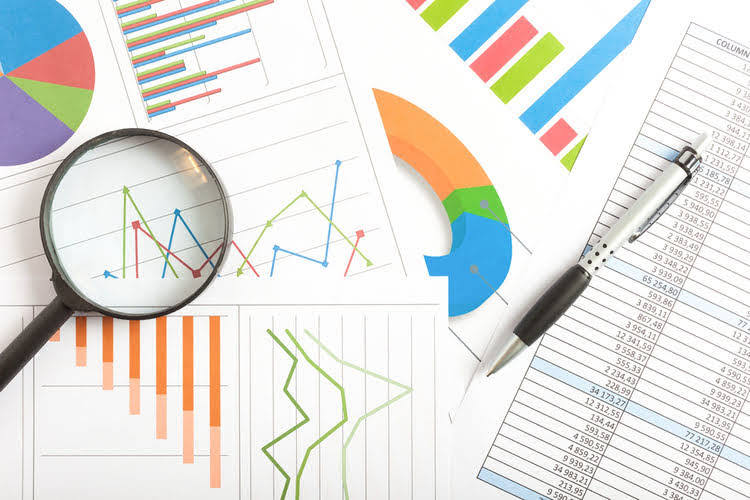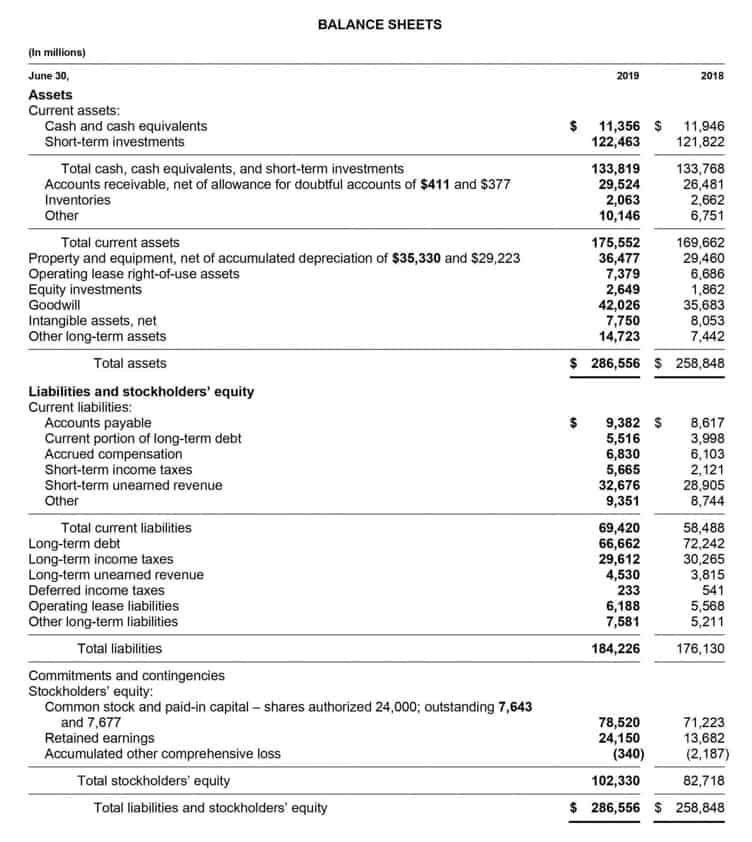Content

Likewise, in this journal entry, the net impact on the balance sheet is zero as one asset increases while another asset decreases. The adjusting journal entry should be passed at the end of every period in order to prepare and present the correct monthly financial statement of the company to the stakeholders.
Unearned revenues are money received before work has been performed and is recorded as a liability. Prepaid expenses are expenses the company pays for in advance and are assets including things like rent, insurance, supplies, inventory, and other assets. A prepaid expense is when a company makes a payment for goods or services that have not been used or received yet. This type of expense is typically recorded as an asset on a company’s balance sheet that is expensed over a period of time on the business’s income statement. Goods or services that incur prepaid expenses will generally provide value over an extended period of time. Consider the previous example from the point of view of the customer who pays $1,800 for six months of insurance coverage.
What Type Of Account Is Prepaid Expense?
Prepaid rent is a current asset and it occurs when the company pays cash for future rent. Since they have not yet incurred the rent expense, the company should record an asset as they will be able to benefit in the future.

But even if you simply use a spreadsheet to calculate your monthly expenses, managing prepaid expenses is one of the easier things you’ll need to manage. Sometimes, your accounting software can handle the amortization expense creation process, so your monthly journal entries will be completed automatically. If you’re using manual ledgers for your accounting, you can create a spreadsheet outlining your monthly expenses that will need to be recorded in your general ledger as an adjusting entry.
Understanding Prepaids And Accounts Payable
Each month, the company will reduce the prepaid insurance account with a credit of $200 and expense the $200 on the balance sheet. This process will continue until the year is complete and the prepaid insurance account is empty. XYZ Company purchases a one-year insurance policy that costs $2,400.

Meanwhile, some companies pay taxes before they are due, such as an estimated tax payment based on what might come due in the future. Other less common prepaid expenses might include equipment rental or utilities. A concern when recording prepaid rent in this manner is that one might forget to shift the asset into an expense account in the month when rent is consumed. If so, the financial statements under-report the expense and over-report the asset. To avoid this, keep track of the contents of the prepaid assets account, and review the list prior to closing the books at the end of each month.
Recording Prepaid Expenses In The Financial Statements:
Because prepayments they are not yet incurred, they should not be classified as expenses. Rather, they are classified as current assets, readily available for use when the company needs them.
The trial balance, drawn up on 31 December 2019, assumed that he had no other insurance and his insurance expenses account would show a balance of $4,800. When combined with the $1,200 in Prepaid Insurance initially recorded on October 1, this $300 reduction means that the adjusted Prepaid Insurance asset is now recorded at $900 on the company’s books.

The two most common uses of prepaid expenses are rent and insurance. In this lesson, you’ll learn how accountants use fixed asset roll forwards to more accurately account for plant, property, and equipment changes during the accounting period. In accounting, a contra account is where the adjustments and transactions with contrasting effects on the parent account are recorded. Learn more about the definition of a contra account and the concept of accounting to the contrary, and explore examples of such an account and its impacts on a business’s bottom line. On 1 September 2019, Mr. John bought a motor car and got it insured for one year, paying $4,800 as a premium. When he paid this premium, he debited his insurance expenses account with the full amount, i.e., $4,800. Debit the Expense account and credit Prepaid Expenses for the appropriate percentage of the total payment (1/6 if 6 months, ¼ if quarterly for a year).
Prepaid Expenses
Enter payment to vendor using the account created in Step 1. If you’re creating a spreadsheet to track your monthly expense, it would look like this. Get clear, concise answers to common business and software questions. On December 1, 20×1, Entity A rented office space for one year and prepaid the $36,000 yearly rent.
Is prepaid rent a non current asset?
Is prepaid rent an asset? If you’re making a rent payment before the period it’s due, this is considered prepaid rent. It’s a current asset that’s reported on the balance sheet.
ParticularsDrCrExpense A/C Drx,xxxTo Prepaid Expense A/Cx,xxxSuch expenses are shown on the asset side of balance sheet under Current Assets heading. The value of asset is then changed with actual expense recognized in the income statement. For example, on December 29, 2020, the company ABC pays the $30,000 rent in advance for 6 months for the office rent from January 2021 to June 2021.
Prepaid Rent & Accounting
Once the amount has been paid for the expenses in advance , a journal entry should be passed to record it on the date when it is paid. The date when the benefits have been received against it, then the entry should be passed to record it as actual expense in the books of accounts. Every month for the next 12 months to prepare and present the correct monthly financial statement of the company, after which the balance of prepaid rent and insurance account will become nil. You accrue a prepaid expense when you pay for something that you will receive in the near future.
Why is prepaid rent not an expense?
The key difference is that prepaid expenses are reported as a current asset on the balance sheet and accrued expenses as current liabilities. A prepaid expense means a company has made an advance payment for goods or services, which it will use at a future date.
Dec 31 Insurance Expense 4,000.00 Prepaid Insurance 4,000.00 Of the total six-month insurance amounting to $6,000 ($1,000 per month), the insurance for 4 months has already expired. In the entry above, we are actually transferring $4,000 from the asset to the expense account (i.e., from Prepaid Insurance to Insurance Expense).
Effect Of Prepaid Expenses On Financial Statements
Any time you pay for something before using it, you must recognize it through prepaid expenses accounting. However, similar to prepaid insurance, the prepaid rent will expire through the passage of time. So, the company needs to recognize the expiration cost as a rent expense at the end of the period. The expense would prepaid rent show up on the income statement while the decrease in prepaid rent of $10,000 would reduce the assets on the balance sheet by $10,000. The most common types of prepaid expenses are prepaid rent and prepaid insurance. Adjusting entries are done at the end of a cycle in accounting in order to update financial accounts.
Accounting Accounting software helps manage payable and receivable accounts, general ledgers, payroll and other accounting activities. The content provided on accountingsuperpowers.com and accompanying courses is intended for educational and informational purposes only to help business owners understand general accounting issues. The content is not intended as advice for a specific accounting situation or as a substitute for professional advice from a licensed CPA. Accounting practices, tax laws, and regulations vary from jurisdiction to jurisdiction, so speak with a local accounting professional regarding your business. Reliance on any information provided on this site or courses is solely at your own risk. As the insurance coverage expires over multiple future periods, a series of subsequent entries such as the one above are made.
He is the sole author of all the materials on AccountingCoach.com. The estimated residual value is the amount that the company can probably sell the asset for at the end of its estimated useful life. Our priority at The Blueprint is helping businesses find the best solutions to improve their bottom lines and make owners smarter, happier, and richer. That’s why our editorial opinions and reviews are ours alone and aren’t inspired, endorsed, or sponsored by an advertiser.
- Consider the previous example from the point of view of the customer who pays $1,800 for six months of insurance coverage.
- Since they have not yet incurred the rent expense, the company should record an asset as they will be able to benefit in the future.
- Editorial content from The Blueprint is separate from The Motley Fool editorial content and is created by a different analyst team.
- An adjusting journal entry occurs at the end of a reporting period to record any unrecognized income or expenses for the period.
- Any time you pay a bill in advance, it’s considered a prepaid expense and should be recorded as such.
Even if a high certainty the performance or usage the variable lease payment is based on will be achieved does exist, the payments are not included in the lease liability measurement. While it is highly probable performance or usage will occur, neither of these things are unavoidable by the lessee until after they have been completed. At the end of the accounting period, establish the number of periods over which the item will be amortized, and enter this information in the reconciliation spreadsheet.
Accounting For Accrued Rent With Journal Entries
As there are situations where the Journal Entry for Prepaid expense can be passed, it is not possible to provide all the types of situations. When you initially record a prepaid expense, record it as an asset. Prepaid expenses in balance sheet are listed as assets, too. Do you ever pay for business goods and services before you use them? If so, these types of purchases require special attention in your books. The adjusting journal entry is done each month, and at the end of the year, when the lease agreement has no future economic benefits, the prepaid rent balance would be 0.
The company pays for the year-long insurance policy upfront and will receive coverage for the following 12 months. When the insurance is initially paid for, the company debits its prepaid insurance account for $2,400 and credits its cash account for $2,400. Prepaid expenses aren’t included in the income statement per Generally Accepted Accounting Principles . In particular, the GAAP matching principle, which requires accrual accounting. Accrual accounting requires that revenue and expenses be reported in the same period as incurred no matter when cash or money exchanges hands. Thus, prepaid expenses aren’t recognized on the income statement when paid, because they have yet to be incurred.
In short, organizations will now have to record both an asset and a liability for their operating leases. Prepaid expenses are not recorded on an income statement initially.
Understanding Accrued Expenses vs. Accounts Payable – Investopedia
Understanding Accrued Expenses vs. Accounts Payable.
Posted: Sat, 25 Mar 2017 17:35:17 GMT [source]
Repeat the process each month until the policy is used and the asset account is empty. Prepaid expenses are future expenses that are paid in advance and hence recognized initially as an asset. Accrual accounting is the most common method used by businesses. Define accrued expenses and revenues, explore the types of accrued expenses and revenues, and examine practical examples of these two concepts. Notice that the amount for which adjustment is made differs under two methods, but the final amounts are the same, i.e., an insurance expense of $450 and prepaid insurance of $1,350. Prepaid or unexpired expenses can be recorded under two methods – asset method and expense method.
The accounting process under both methods is explained below. If the user has multiple prepaid expenses to track, it is suggested that they create sub-accounts of the Prepaid Expenses account in order to track each separately. A depreciable asset is a manufactured asset such as a building, machine, vehicle, or piece of equipment that provides service to a business. In time, these assets lose their utility because of wear and tear from use or obsolescence due to technological change. Since companies gradually use up these assets over time, they record depreciation expense on them. Prepaid expenses are recorded on the debit side as an asset account. To summarize, rent is paid to a third party for the right to use their owned asset.
sayon ra man unta ang journal entries pero nglibug ko aning prepaid rent ug remt expense ha! hahaha
— HART ??? (@markieenahart) September 8, 2020
Regardless of whether it’s insurance, rent, utilities, or any other expense that’s paid in advance, it should be recorded in the appropriate prepaid asset account. DateExplanationDebitCreditBalanceDec.31Adjustment200200Note that we are cycling through the second and third steps of the accounting equation again. On the income statement for the year ended December 31, MicroTrain reports one month of insurance expense, $ 200, as one of the expenses it incurred in generating that year’s revenues. It reports the remaining amount of the prepaid expense, $ 2,200, as an asset on the balance sheet.
- Here are common prepaid expenses that small businesses may incur.
- The financial statements are key to both financial modeling and accounting.
- Other times organizations rent different types of equipment – such as office or maintenance equipment – because they require more flexibility than the ownership of property offers.
- For example, let’s examine a lease agreement that includes a variable rent portion of a percentage of sales over an annual minimum.
- The expense for the first two months has been incurred because the company has used the rented equipment or occupied the leased space, but cash for these services has not been paid.
On December 31, 2018, Company Y Ltd paid the salaries for January 2019, amounting to $ 10,000 in advance to the employees of the company. Analyze the treatment of the amount paid as an advance salary by the company to its employees and pass the necessary journal entries recording the payment and the adjusting entries.
